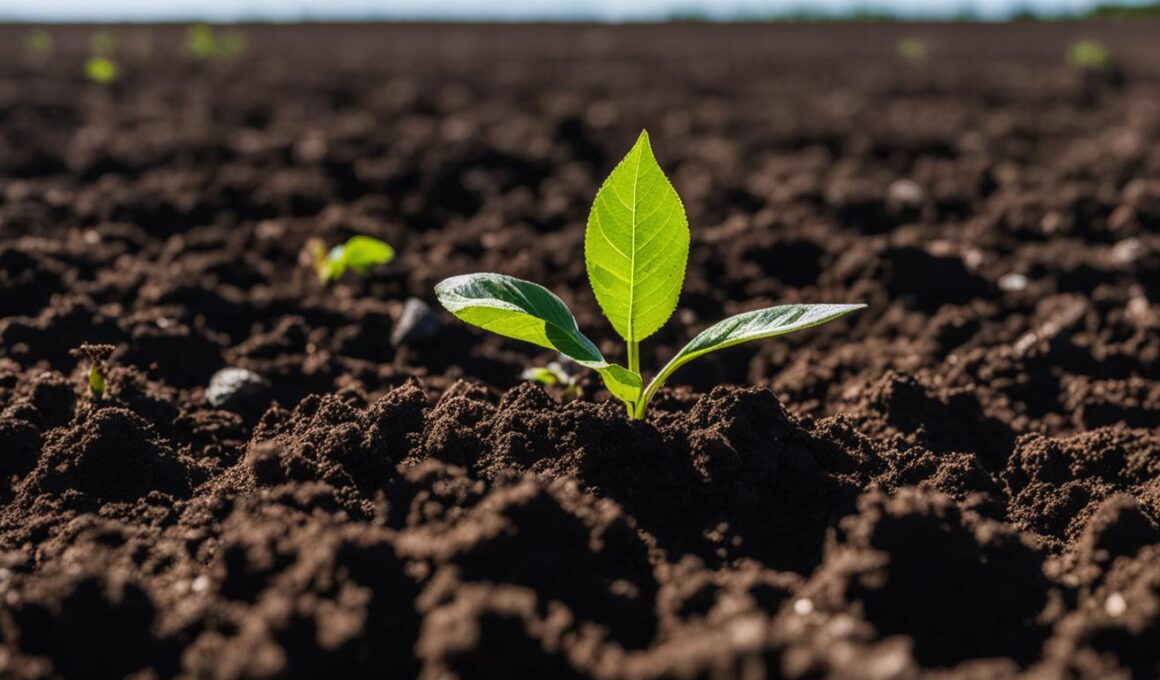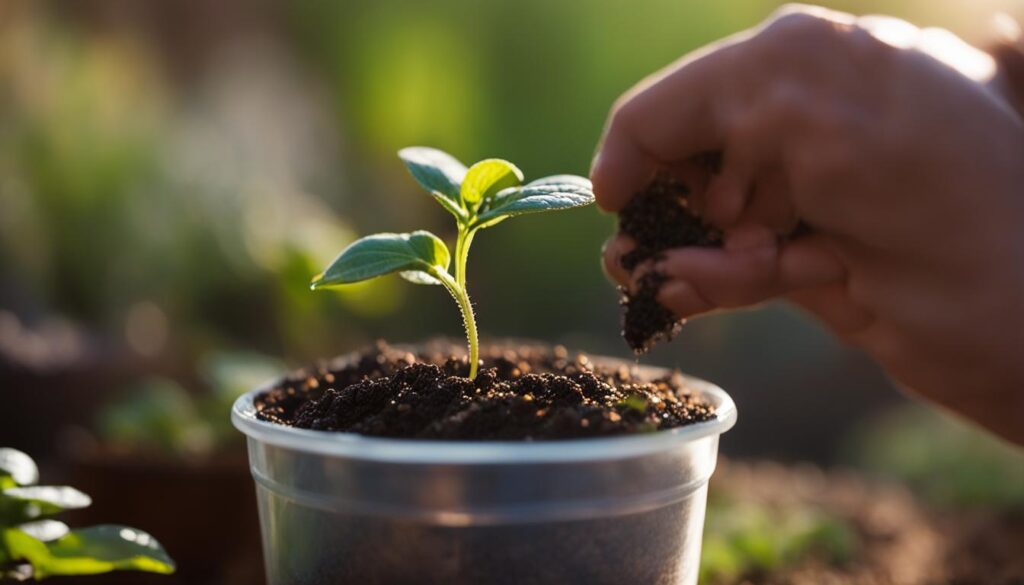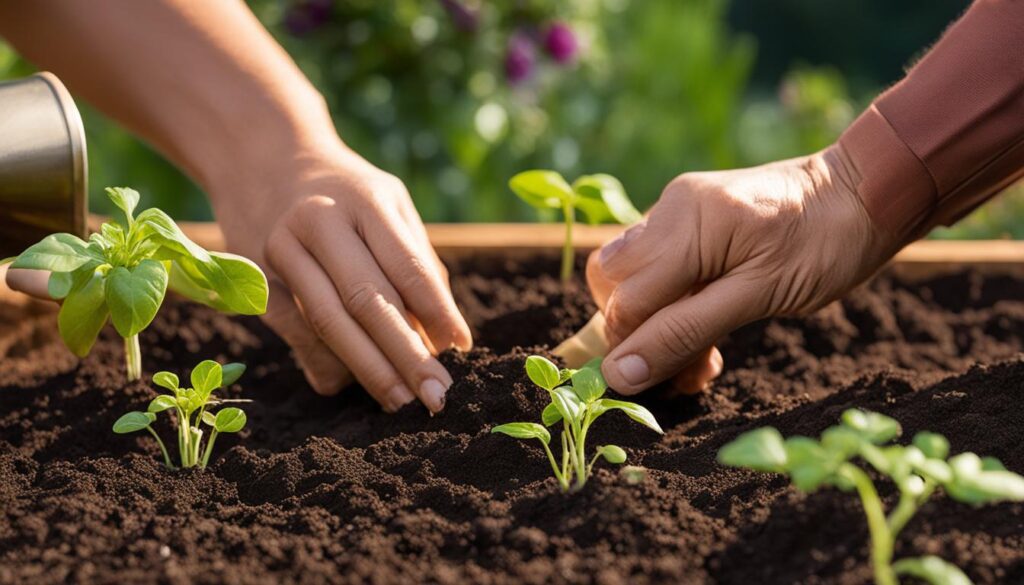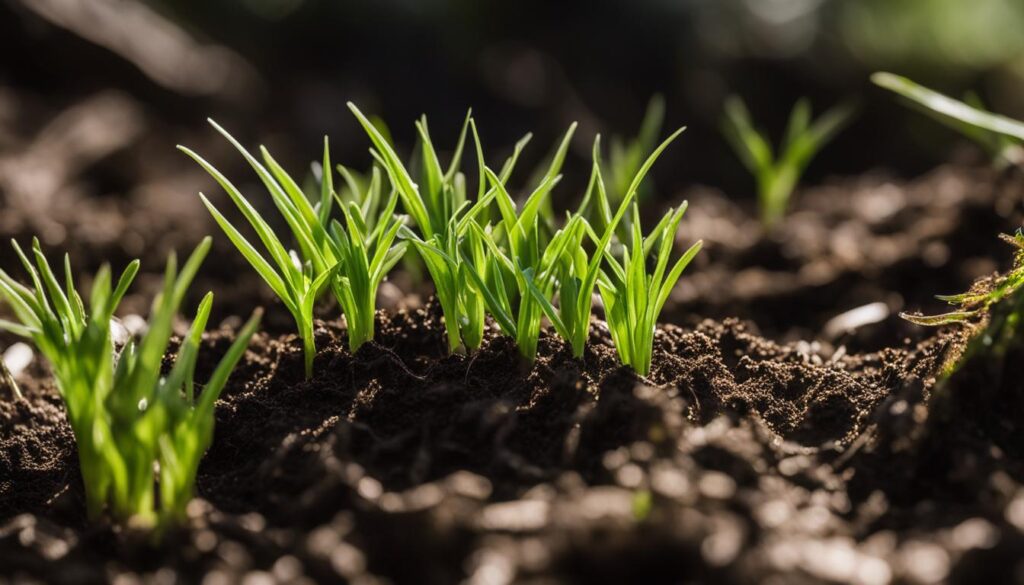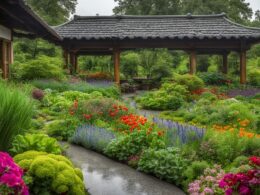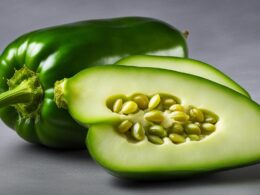If you’re looking to start a garden and want to ensure the health and success of your plants, growing them from seeds is a great option. Not only is it cost-effective, but it also gives you control over the growing conditions and allows you to choose the varieties you want. In this guide, we’ll provide you with essential gardening tips to help you grow plants from seeds and create a thriving garden.
Post Summary
- Starting plants from seeds is a rewarding and cost-effective way to start a garden.
- Choose easy-to-grow plants and follow seed packet instructions for best results.
- Get organized and gather the necessary supplies before starting your seeds indoors.
- Provide optimal conditions such as proper lighting, temperature, and ventilation for seedling care.
- Consider direct sowing outdoors for certain plant varieties, following planting instructions.
Getting Started
Before you start growing plants from seeds, it’s important to get organized and gather the necessary supplies. Start by choosing the seeds you want to grow and make sure to check the average first and last frost dates for your area. This will help determine the optimal time to start your seeds indoors. Keep a gardening journal or use a calendar to track important information such as planting dates, germination times, and transplanting recommendations. This will help you stay organized and ensure the success of your seedlings.
Having a gardening journal is especially helpful for keeping track of your progress and learning from your experiences. It allows you to note down any observations, successes, and challenges you encounter along the way. By documenting your gardening journey, you can make adjustments to your gardening practices and improve your skills over time.
Gardening Journal Template
Use the following template as a starting point for your gardening journal:
| Date | Activity | Observations/Notes |
|---|---|---|
| April 1, 20XX | Sowed tomato seeds indoors | Used seed starting trays and labeled each variety |
| April 7, 20XX | First signs of germination | Placed seedlings under grow lights for 12 hours per day |
| April 15, 20XX | Transplanted seedlings into larger pots | Used a well-draining potting mix and watered thoroughly |
| April 30, 20XX | Hardened off seedlings | Gradually exposed seedlings to outdoor conditions to acclimate |
Remember, starting seeds indoors requires patience and attention to detail. By following these initial steps and maintaining a gardening journal, you’ll be well on your way to successfully growing plants from seeds.
Seed Starting Supplies
To successfully start seeds indoors, you will need the right supplies. Here are some essential items:
- Seed Starting Trays: These trays are specifically designed for seed starting and can be purchased at garden centers or online.
- Potting Mix: Use a high-quality potting mix or seed starting mix that provides good drainage and seed-to-soil contact. This will promote healthy root growth.
- Containers: If you prefer a more sustainable option, you can use household items such as paper cups, milk jugs, or egg cartons as growing containers.
- Seed Starting Kit: Consider using a seed starting kit that includes everything you need to get started, such as trays, pots, labels, and a dome for humidity control.
Using the right supplies will ensure that your seeds have the best chance of germinating and growing into healthy seedlings. Now, let’s move on to the next section to learn about planting the seeds.
Comparison of Seed Starting Supplies
| Item | Pros | Cons |
|---|---|---|
| Seed Starting Trays | – Specifically designed for seed starting – Easy to use and clean |
– Can be expensive – Limited size options |
| Potting Mix | – Provides good drainage – Promotes healthy root growth |
– May contain pests or weed seeds if not high-quality |
| Containers | – Sustainable option – Easily available |
– May require more frequent watering – Limited space for root growth |
| Seed Starting Kit | – Comes with all necessary supplies – Convenient and beginner-friendly |
– Can be more expensive than buying individual items |
By carefully choosing the right seed starting supplies, you’ll be well-prepared to start your seeds indoors and set them up for success. In the next section, we’ll dive into the details of planting your seeds and ensuring optimal conditions for germination.
Planting Seeds
When it comes to planting seeds, following the instructions on the seed packet is crucial for success. Different plant varieties have specific requirements, so it’s important to research and understand the needs of each seed. Start by reading the packet to see if the seeds need any special treatment before planting. Some seeds may require presoaking, nicking, or chilling to improve germination rates.
Once you’re ready to plant, pay attention to the recommended seed depth. Most seeds should be planted at a depth of two to three times their size. Use your finger or a pencil to create a hole in the soil, place the seed inside, and cover it with soil. Some seeds, however, should not be covered with soil and need light to germinate. In that case, gently press the seed into the soil surface without covering it.
Germination times can vary depending on the plant variety. Some seeds may sprout within a few days, while others can take weeks. It’s important to be patient and provide the optimal conditions for germination, including proper moisture and temperature. Keep the soil consistently moist but not waterlogged, as excess water can lead to rotting. And remember to label each pot or flat with the variety name and date of sowing for easy tracking.
Common Seed Depth Guidelines
| Seed Type | Ideal Depth |
|---|---|
| Small Seeds (such as lettuce or petunia) | 1/8 inch |
| Medium Seeds (such as tomato or pepper) | 1/4 inch |
| Large Seeds (such as squash or sunflower) | 1/2 inch |
Remember to keep track of the specific planting instructions for each type of seed you are growing. By following these instructions and providing the right conditions for germination, you can set your seedlings up for success as they begin their journey towards becoming healthy plants.
Seed & Seedling Care
Proper care is essential for the healthy growth of your seeds and seedlings. Here are some important factors to consider:
Light Requirements
Light is crucial for seedling growth, as it provides the energy needed for photosynthesis. Most indoor environments lack sufficient natural light, especially during the winter months. To ensure your seedlings receive adequate light, consider using grow lights. Position the lights about 2-4 inches above the seedlings and keep them on for 12-16 hours a day. Adjust the height as the seedlings grow to maintain the optimal distance.
Soil Composition
The type of soil you use can greatly affect the growth and development of your seedlings. Choose a high-quality potting mix or soilless mix that is well-draining and provides good aeration. Avoid using regular garden soil, as it may contain pests, diseases, and weed seeds. The right soil composition will provide the necessary nutrients and support for healthy root growth.
Watering Schedule
Proper watering is essential for the health of your seedlings. Water them regularly, keeping the soil evenly moist but not soggy. Overwatering can lead to root rot and other fungal diseases. Avoid letting the pots sit in standing water for extended periods. Check the moisture level of the soil by inserting your finger about an inch deep into the soil. If it feels dry, it’s time to water. It’s better to water deeply and less frequently to encourage stronger root growth.
Fertilizing
Seedlings require nutrients to support their growth. Once your seedlings have developed their first set of true leaves, you can start fertilizing them. Use a water-soluble fertilizer at half strength every two weeks. This will provide the necessary nutrients without overwhelming the young plants. Follow the instructions on the fertilizer package for application rates and frequencies.
Remember, providing the right light, soil, water, and nutrients will help your seeds and seedlings thrive. By paying attention to their specific needs, you can ensure healthy and strong plants for your garden.
Starting Seeds Outdoors
Once you’ve gathered the necessary supplies and selected the appropriate seeds, it’s time to start sowing them directly into your outdoor space. Direct sowing is a convenient method, especially for fast-growing plant varieties. Before you begin, there are a few key factors to consider in order to ensure successful germination and growth.
One important factor to take into account is the soil temperature. Different plants have varying temperature requirements for germination. It’s essential to know the optimal soil temperature for your chosen plant varieties and to plant them accordingly. Cool weather plants can often be sown earlier in the season when soil temperatures range from 40-50 degrees F, while warm weather plants generally require soil temperatures of at least 65-70 degrees F. By paying attention to soil temperature, you can provide the ideal conditions for your seeds to thrive.
Another crucial consideration is the plant hardiness zone of your region. Each plant has specific hardiness requirements, and it’s important to select varieties that are suitable for your specific climate. By choosing plants that are well-suited to your region’s hardiness zone, you increase their chances of successful growth and productivity. Additionally, be sure to follow the planting instructions for each plant variety, including recommended spacing and planting depth, to provide the best possible start for your seedlings.
Planting Tips
- Prepare the soil: Before sowing your seeds, prepare the soil by removing any debris and loosening it with a garden fork or tiller. This will ensure good seed-to-soil contact and allow for better seed germination.
- Sow the seeds: Follow the instructions on the seed packet for proper sowing depth and spacing. Gently press the seeds into the soil and cover them with a thin layer of soil or compost.
- Water regularly: Keep the soil evenly moist but avoid overwatering, as it can lead to rot and disease. Watering with a gentle spray or using a soaker hose is recommended to prevent disrupting the seeds or seedlings.
- Provide protection: Protect your seedlings from pests and adverse weather conditions by using row covers or installing a temporary greenhouse structure. This will help create a favorable environment for their growth.
By following these tips and paying attention to soil temperature, hardiness zones, and recommended planting techniques, you can successfully start your seeds outdoors. Direct sowing allows your plants to grow in their natural environment and eliminates the need for transplanting. Enjoy the process of nurturing your seedlings as they grow into healthy, productive plants in your garden.
Prepare potting mix and sow seeds
Before sowing the seeds, it’s important to prepare the potting mix to provide an optimal growing environment for your seeds. Start by pre-moistening the potting soil until it reaches a moist but not soggy consistency. This will help ensure that the seeds have enough moisture to germinate without becoming waterlogged.
Once the potting mix is ready, fill your pots or cells with the soil, gently pressing it down to remove any air pockets. Follow the sowing instructions on the seed packets, as each seed variety may have different requirements. Pay attention to the recommended planting depth and spacing for each seed, as this will help them grow and develop properly.
After sowing the seeds, it’s important to label each pot or flat with the variety name and date of sowing. This will help you keep track of your seeds and identify them as they grow. A simple label with the variety name written on a popsicle stick or small tag can work well. By properly labeling your pots, you can easily identify different plant varieties as they start to grow.
Sowing Instructions for Common Vegetable Seeds
| Vegetable | Planting Depth | Spacing |
|---|---|---|
| Tomato | 1/4 inch | 18-24 inches |
| Lettuce | 1/4 inch | 6-8 inches |
| Cucumber | 1 inch | 36-48 inches |
| Carrot | 1/4 inch | 2-3 inches |
Care for Seedlings Indoors
When it comes to growing seedlings indoors, proper care is essential for their healthy growth and development. By providing the right temperature, lighting, ventilation, and watering techniques, you can ensure that your seedlings thrive and have a strong start to their journey.
Temperature Control
Seedlings have specific temperature requirements for optimal growth. Most seeds require a temperature range of 60-75 degrees Fahrenheit for successful germination. It’s important to maintain a consistent temperature within this range to provide the ideal conditions for your seedlings. Use a thermometer to monitor the temperature in the area where your seedlings are growing and make adjustments as needed.
Lighting
Proper lighting is critical for seedling growth, especially in indoor environments where natural light may be limited. Supplemental lighting, such as grow lights, can provide the necessary light intensity to promote healthy growth. Position the lights at an appropriate distance from the seedlings to prevent them from getting too close and causing heat stress. Aim to provide 12-16 hours of light per day to mimic natural daylight.
Ventilation
Good ventilation is essential to prevent damping off disease and promote healthy airflow around your seedlings. Periodically uncover the containers or open a small vent to allow fresh air to circulate. This helps prevent excessive moisture buildup, which can lead to fungal diseases. However, be cautious not to expose your seedlings to drafts or sudden temperature changes, as this can negatively affect their growth.
Watering Techniques
Proper watering is crucial for seedling health. Water your seedlings carefully to keep the soil evenly moist but not waterlogged. Avoid overwatering, as this can lead to root rot. To prevent waterlogging, ensure that the containers have drainage holes or use pots with bottom trays to collect excess water. Water at the base of the seedlings rather than from above to avoid wetting the leaves, which can increase the risk of fungal diseases.
In summary, caring for seedlings indoors involves maintaining the right temperature, providing adequate lighting, ensuring proper ventilation, and employing appropriate watering techniques. By following these guidelines, you can set your seedlings up for success and help them establish a strong foundation for transplanting outdoors in the future.
Conclusion
Growing plants from seeds can be a fulfilling and budget-friendly way to kickstart your garden. By following these simple tips and techniques, you can ensure a successful seed starting experience and enjoy a thriving outdoor garden.
To begin, choose the right seeds for your garden and take note of your region’s climate and plant hardiness zone. This will help you select plants that are well-suited to your area’s conditions and ensure their success.
Once you’ve started your seeds indoors, provide them with the optimal growing conditions. Keep an eye on temperature control, lighting, ventilation, and watering techniques to give your seedlings the best chance of thriving. As they grow, gradually acclimate them to outdoor conditions before transplanting them into the garden.
Finally, remember to care for your plants throughout their growth stages. Pay attention to their light requirements, soil composition, watering schedule, and fertilizing needs. By providing proper care, you’ll be rewarded with healthy and vibrant plants that will beautify your outdoor space.
Can Flower Gardening Tips also be applied to growing other types of plants in the garden?
Yes, flower gardening tips for beginners can certainly be applied to growing other types of plants in the garden. Practices such as proper soil preparation, regular watering, and appropriate sunlight exposure are crucial for the success of various types of plants, not just flowers.
FAQ
How do I choose the right seeds?
When choosing seeds, consider the plant varieties you want to grow and check their growing requirements. Make sure to choose seeds suitable for your climate and plant hardiness zone.
When should I start seeds indoors?
The optimal time to start seeds indoors is determined by the average first and last frost dates for your area. Start the seeds indoors a few weeks before the last expected frost to give them a head start on the growing season.
Can I use household items as growing containers?
Yes, if you prefer a sustainable option, you can use paper cups, milk jugs, or egg cartons as growing containers. Just make sure to poke holes in the bottom for drainage.
How deep should I plant the seeds?
The planting depth varies depending on the seed variety. As a general rule, plant seeds two to three times their diameter. Follow the instructions on the seed packets for specific planting depth guidelines.
How often should I water seedlings?
Water seedlings regularly, keeping the soil evenly moist but not waterlogged. Avoid overwatering, as it can lead to root rot. Check the soil moisture level by sticking your finger about an inch into the soil. If it feels dry, it’s time to water.
Can I directly sow seeds outdoors?
Yes, many plants can be directly sown outdoors. However, make sure to check the optimal soil temperature for planting and choose plants suitable for your region’s climate and plant hardiness zone.
How do I label my pots or flats?
Label each pot or flat with the variety name and date of sowing. This will help you keep track of different seed varieties and their growing progress.
How do I provide sufficient light for seedlings indoors?
Most indoor environments lack sufficient light for seedling growth. Consider using grow lights to provide the necessary light intensity. Place the grow lights a few inches above the seedlings and keep them on for 12-16 hours a day.
How often should I fertilize seedlings?
Once the seedlings have developed their first set of true leaves, you can start fertilizing them. Use a water-soluble fertilizer at half strength every two weeks to provide the necessary nutrients for healthy growth.





